
Not Just for Halloween: Bats Are Nature’s Superheroes
It’s spooky season — a time when bats are often misunderstood as creepy creatures lurking in the night. But beneath the Halloween myths and scary stories lies an incredible truth: bats are among the most fascinating, important, and misunderstood animals on the planet.
October 24-31 is Bat Week, and we’re shining a light on bats native to your backyard. Get ready to rethink everything you thought you knew about these nighttime wonders.
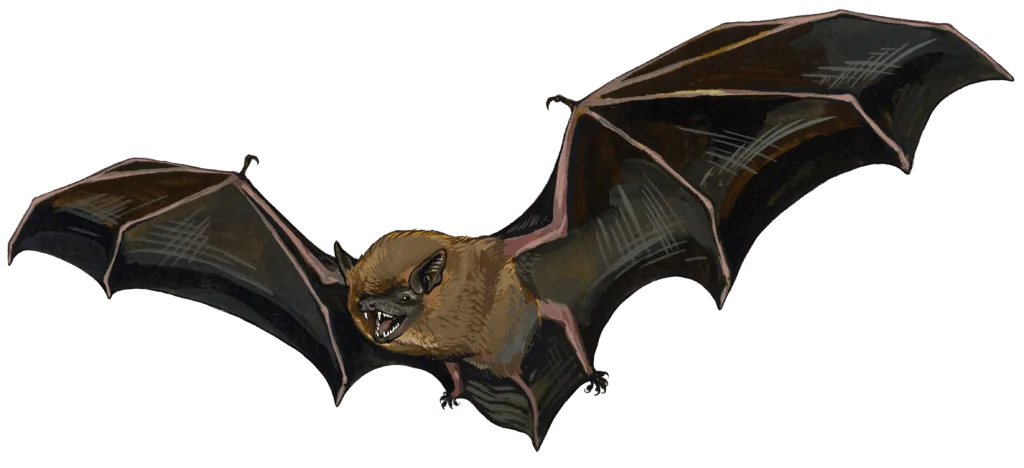
Introducing your local neighbours:
Here in Eastern Canada, we’re lucky to live alongside eight different species of bats, all of which are insectivores. These bats help contribute to the balance of local ecosystems. But sadly, seven of these species are now endangered in Ontario.
Bats have been around for over 50 million years, and the species we see today closely resembles their ancient ancestors. Globally, there are over 1,500 species of bats, with roles ranging from pollinators and seed spreaders to insect predators.
Here’s a quick look at some of your local bats:
| Species | Description | Wingspan | Status |
|---|---|---|---|
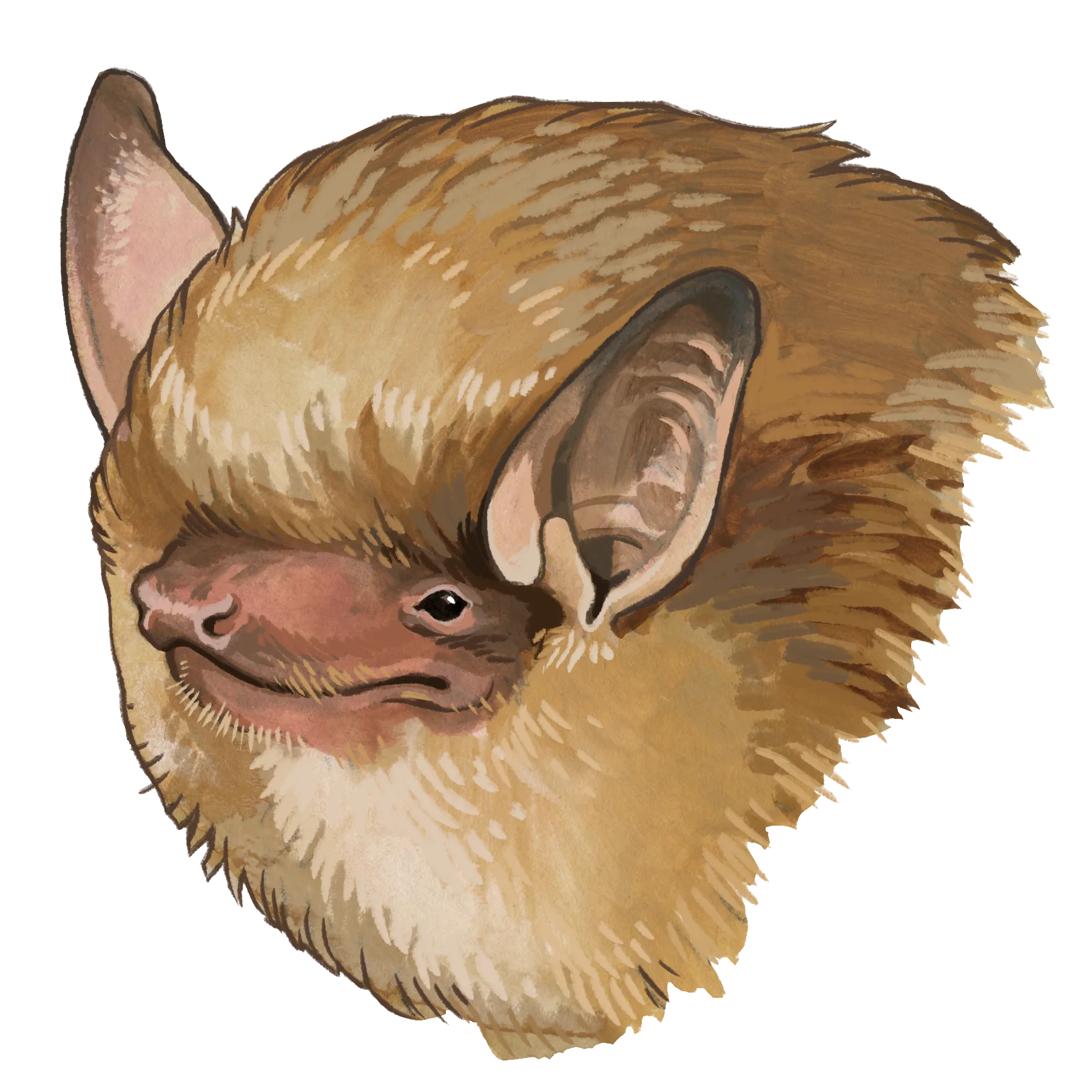 Tricoloured Bat (Perimyotis subflavus) | Fur has three distinct colour bands | 19–26 cm | Endangered |
 Little Brown Myotis (Myotis lucifugus) | Glossy brown fur, roosts in buildings & caves | 22–27 cm | Endangered |
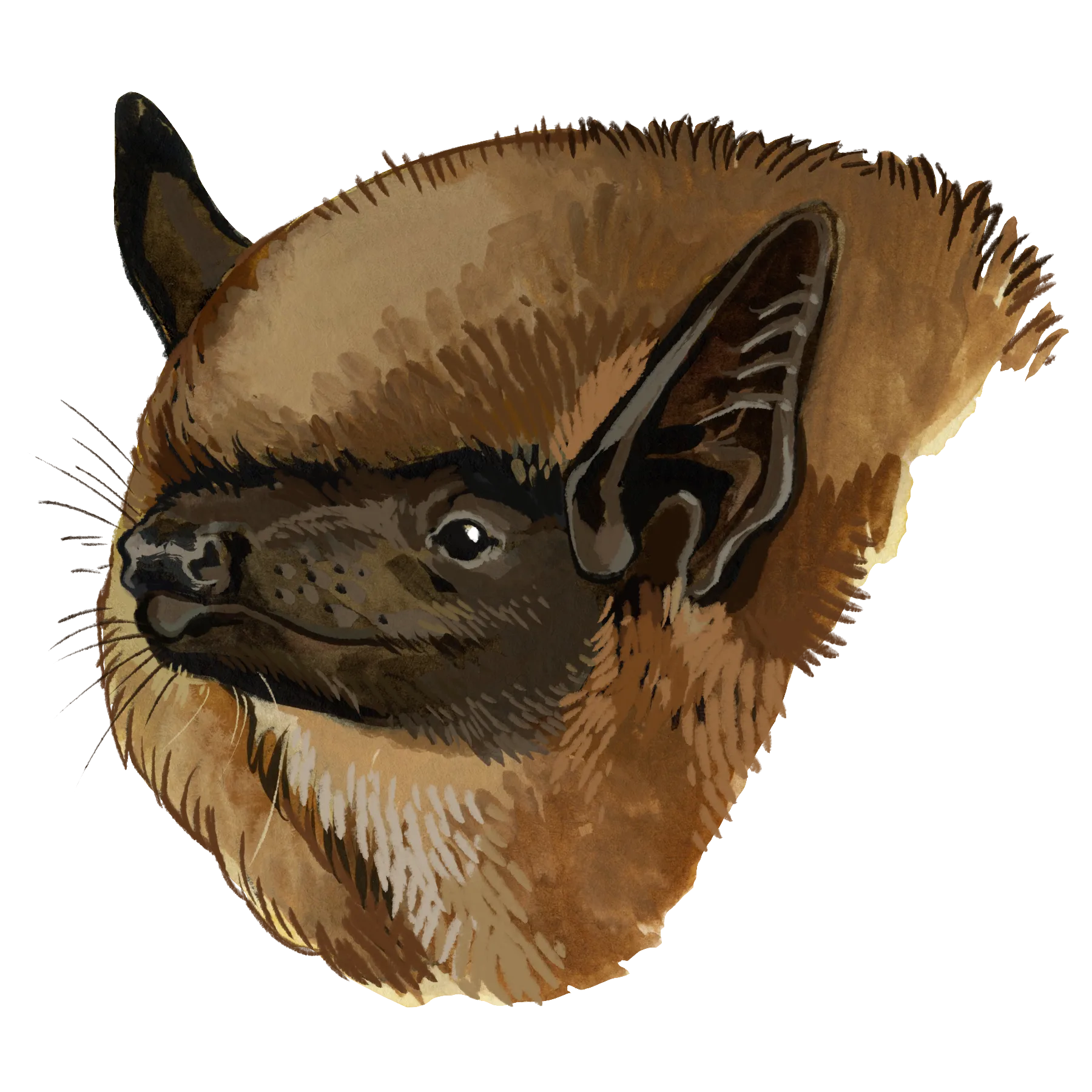 Big Brown Bat (Eptesicus fuscus) | Tan to dark brown, roosts in buildings, trees | 28–33 cm | Common in Southern Ontario |
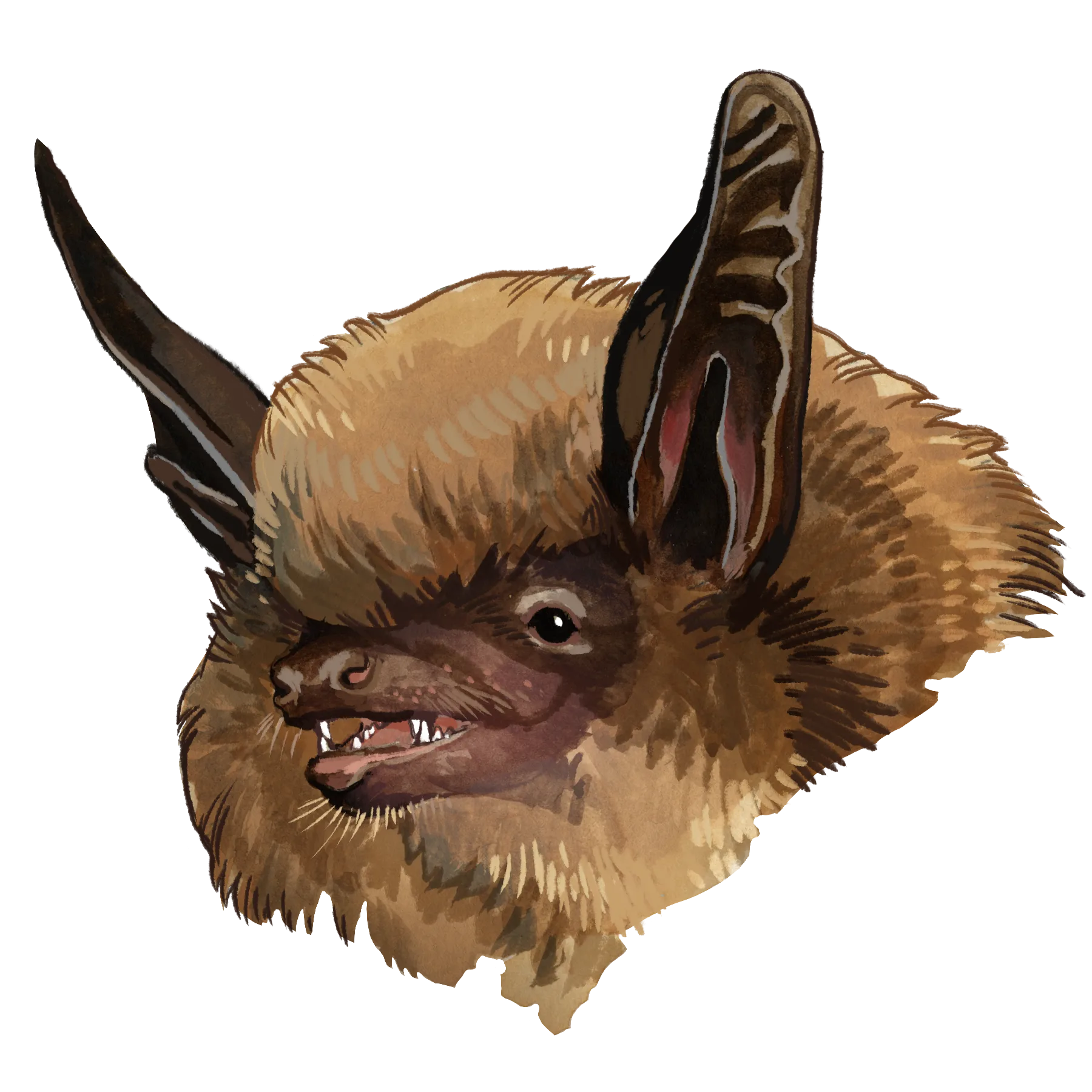 Northern Myotis (Myotis septentrionalis) | Long ears, forest dweller | 23–26 cm | Endangered |
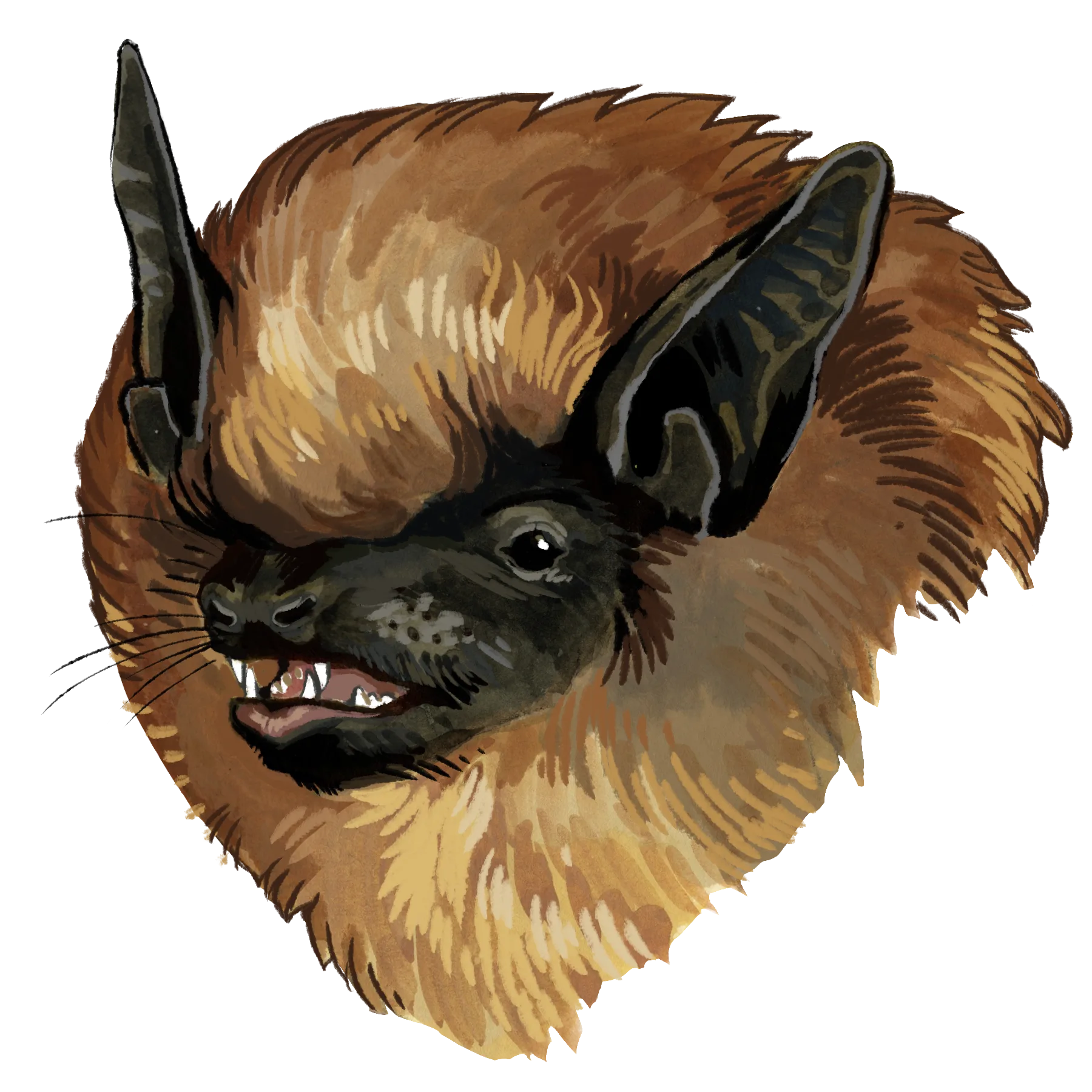 Eastern Small-footed Myotis (Myotis leibii) | Golden brown, very small feet | 21–25 cm | Endangered |
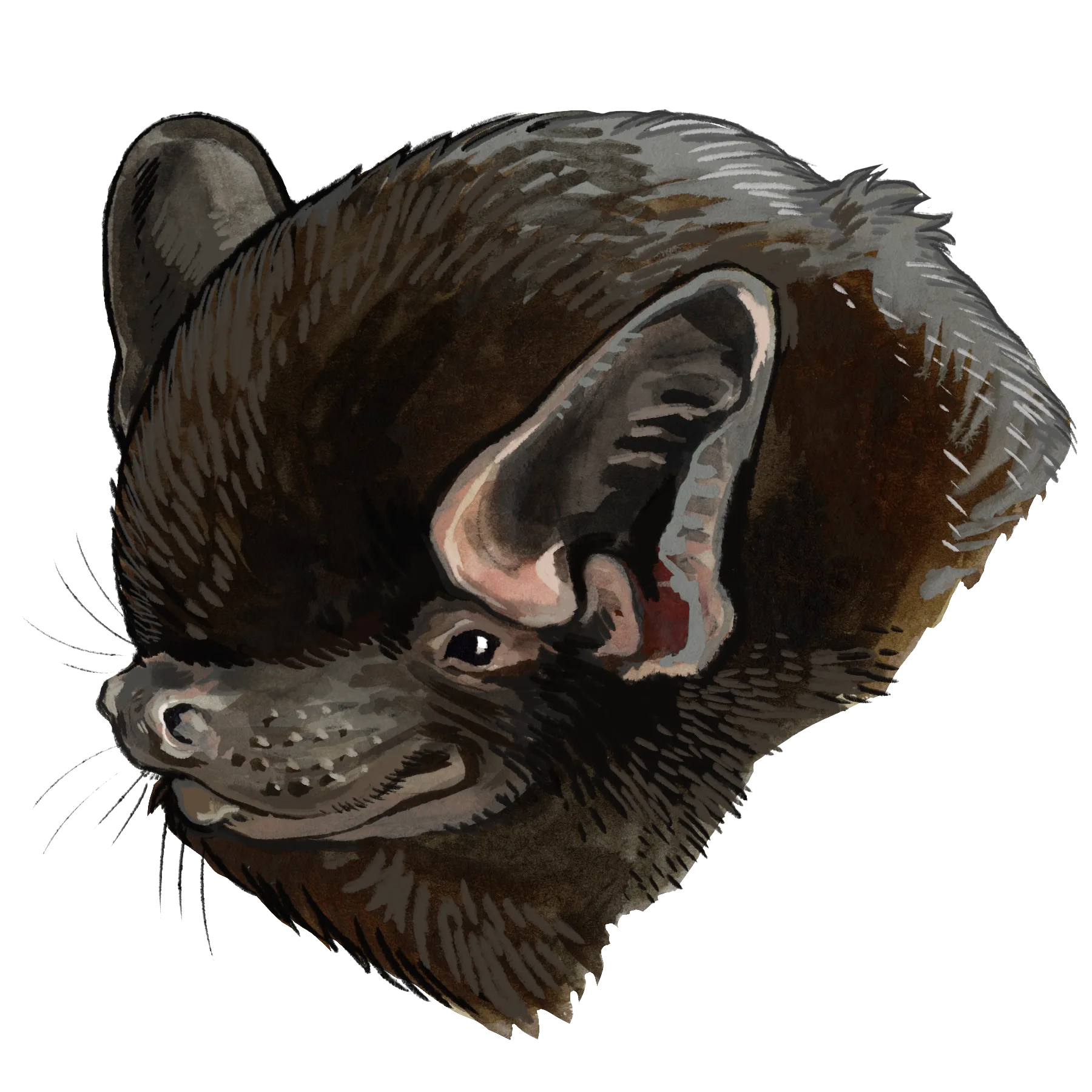 Silver-haired Bat (Lasionycteris noctivagans) | Frosted silver fur, tree-rooster | 27–31 cm | Endangered |
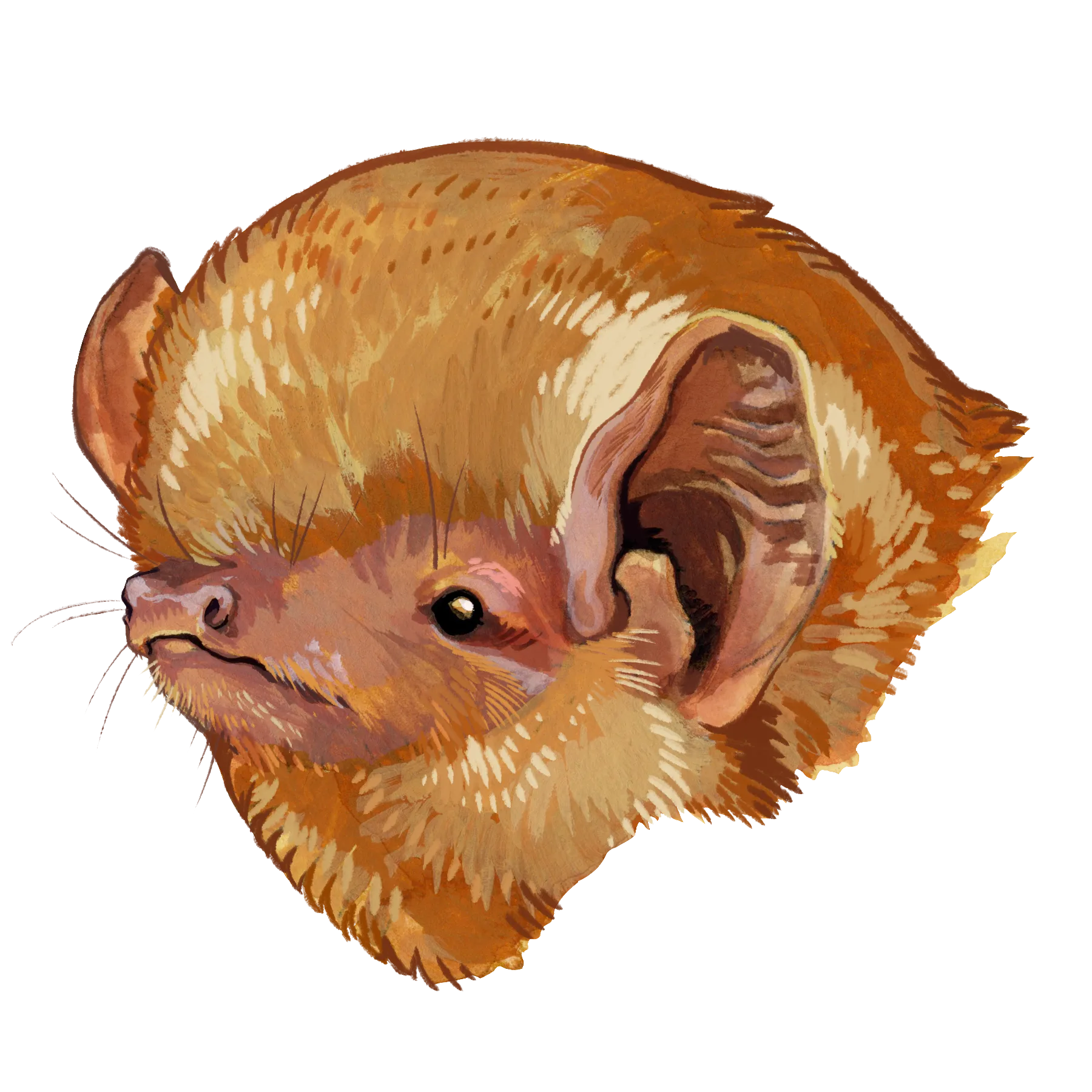 Eastern Red Bat (Lasiurus borealis) | Bright red-orange fur, tree-rooster | 27–33 cm | Endangered |
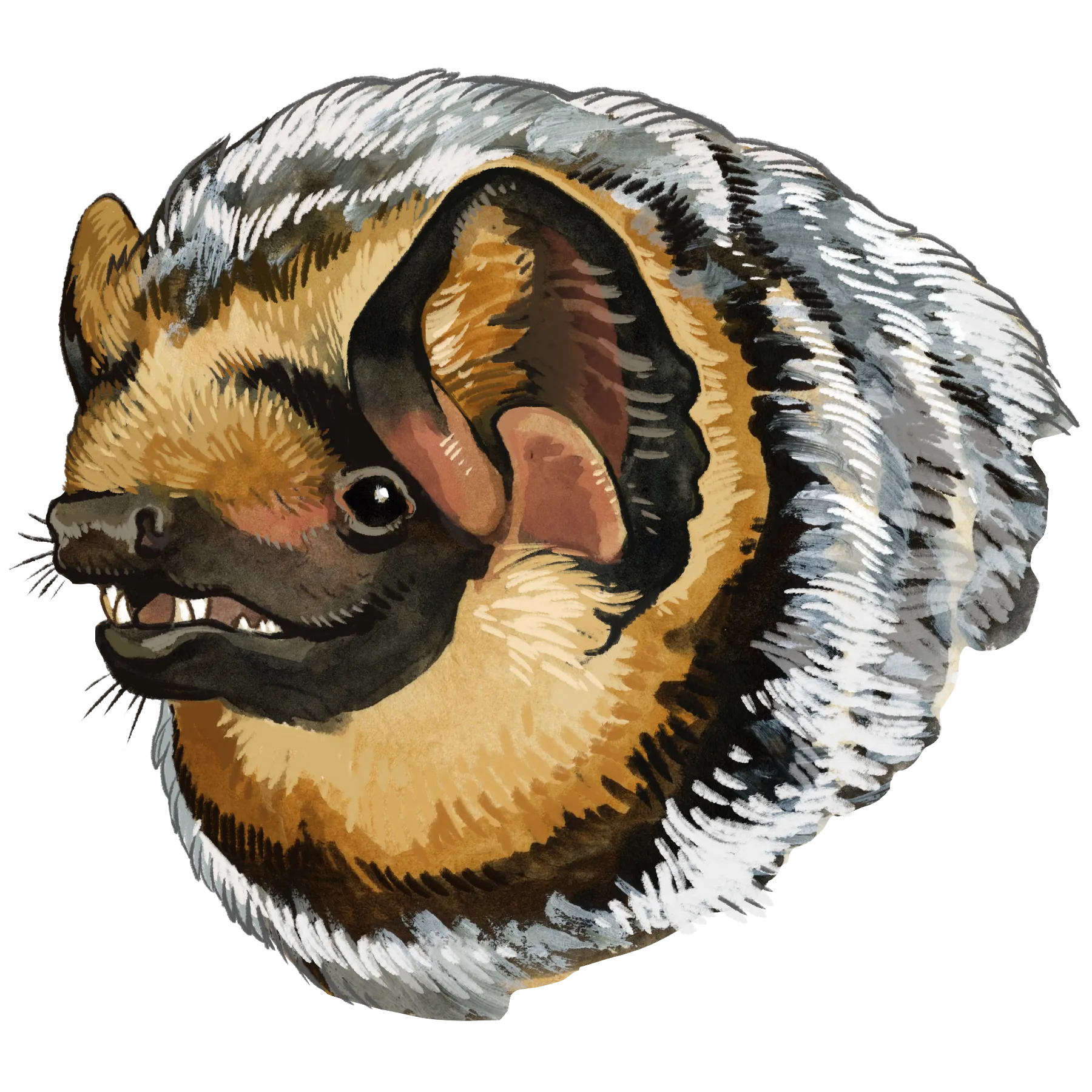 Hoary Bat (Lasiurus cinereus) | Fur has three distinct colour bands | 34–43 cm | Endangered |
Dispelling Urban Legends About Bats:
- Bats are not blind
- They don’t all drink blood
- Bats are gentle, beneficial, and vital to ecosystems around the world.
Nature’s Energy-Savers
During the cold months, bats in Canada either hibernate or migrate, depending on the species. Hibernating bats enter a state called torpor (similar to bears), slowing their heart rate down from over 400 beats per minute to under 25. Their body temperature drops to near freezing to conserve energy, allowing them to survive winter without food. But hibernation is risky. Bats rely on stored fat from the summer, and any disturbance—like caving or loud noises—can wake them up, forcing them to burn through precious energy reserves too soon.
Threatening Their Existence: White Nose Syndrome

In 2006, a deadly fungal disease known as White-nose Syndrome (WNS) was first discovered in New York. Thought to have originated in Europe or Asia, WNS has had a devastating impact on bat populations across North America.
Since then, millions of bats across North America have died. This fungus grows in caves such as those used by hibernating bats. The fungus infects the hibernating bats, growing on their bodies and around their faces. Because of this, these wake prematurely from hibernation, exhausting their fat stores when there’s no food available.
Mortality rates in Eastern Canada averaged around 90%. The little brown myotis, once among the most common, is now endangered in many areas across North America. Scientists believe that WNS may soon cause this species to disappear entirely from the northeastern region of the continent.
Habitat Loss & Human Impact

Unfortunately, Bats are facing more than just White Nose Syndrome. Their populations are also declining due to:
- Habitat destruction
- Pesticide use
- Mine and cave closures
- Modern building practices removing roosting spots
- Unnecessary evictions from homes
Some bats have tried to adapt by roosting in barns, attics, or sheds—but as old buildings are torn down or sealed up, their shelter options are vanishing.
What your Toronto Zoo is doing to help Bats
At your Toronto Zoo, the Native Bat Conservation Program is working to protect the rich diversity of bats in Ontario, with support from numerous partners.
In more than a decade of bat monitoring and research, your Toronto Zoo has worked across Ontario to conduct:
- Acoustic surveys collecting hundreds of thousands of bat echolocation recordings
- Capture-and-release studies and radio telemetry projects
- Public outreach to raise awareness of bats and their importance
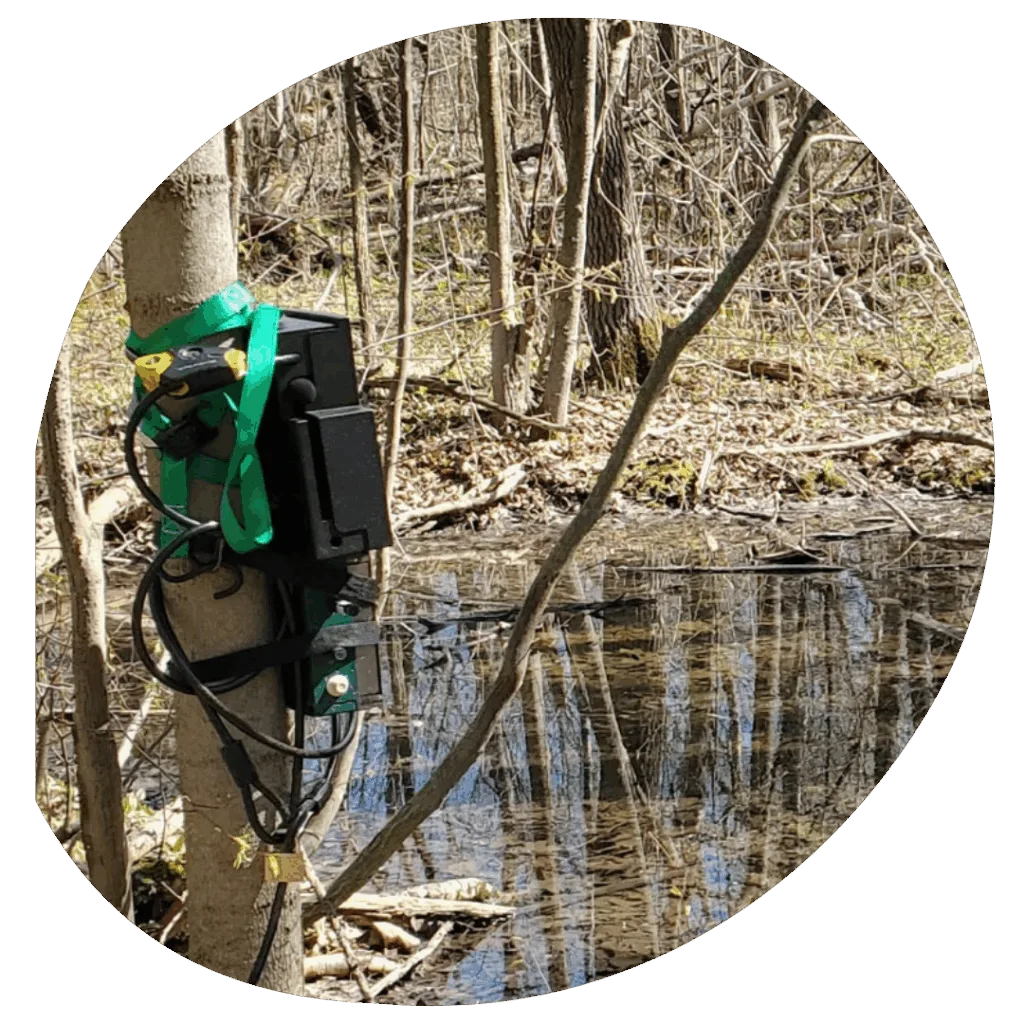
Recently, your Toronto Zoo has expanded acoustic monitoring and trapping surveys in Northern Ontario, helping to better understand bat species in this region. After analyzing a large dataset covering much of Northern and Central Ontario, we have identified new insights into bat habitat use at a broad scale. We are working on further research questions to help conserve the bats of the North!
In Southwestern Ontario, the Toronto Zoo bat team has collaborated with local partners to construct and monitor usage of a “bat condo” by a colony of little brown myotis bats following the demolition of their former roosting site. This project has seen the most successful uptake of its kind in Eastern Canada, marking a big win for displaced colonies and providing valuable data on roost exclusion and mitigation strategies.
The team has also just wrapped up the fifth year of the Backyard Bat Acoustic Monitoring (BBAM) project, which aims to empower communities to monitor bats in their own backyards—building awareness and collecting critical data along the way. Over the years, this project has engaged the Metis Nation of Ontario (MNO), several naturalist groups across the province, and your Toronto Zoo’s own staff.

“The Rouge National Urban Park is an amazing place for bats, it has seven of the eight Ontario bat species present within its boundaries. While bats are less visible than some other wildlife, they are an important part of our ecosystem and truly remarkable animals.” – Toby Thorne, Supervisor Field Conservation
From high-tech monitoring to boots-on-the-ground research, the Native Bat Conservation Program continues to deepen our understanding of these elusive creatures—and to ensure that they remain a thriving part of our natural heritage.
What Can YOU Do to Help Bats?
Whether you’re a bat fan or just learning to appreciate them, here are some easy ways to make a difference:
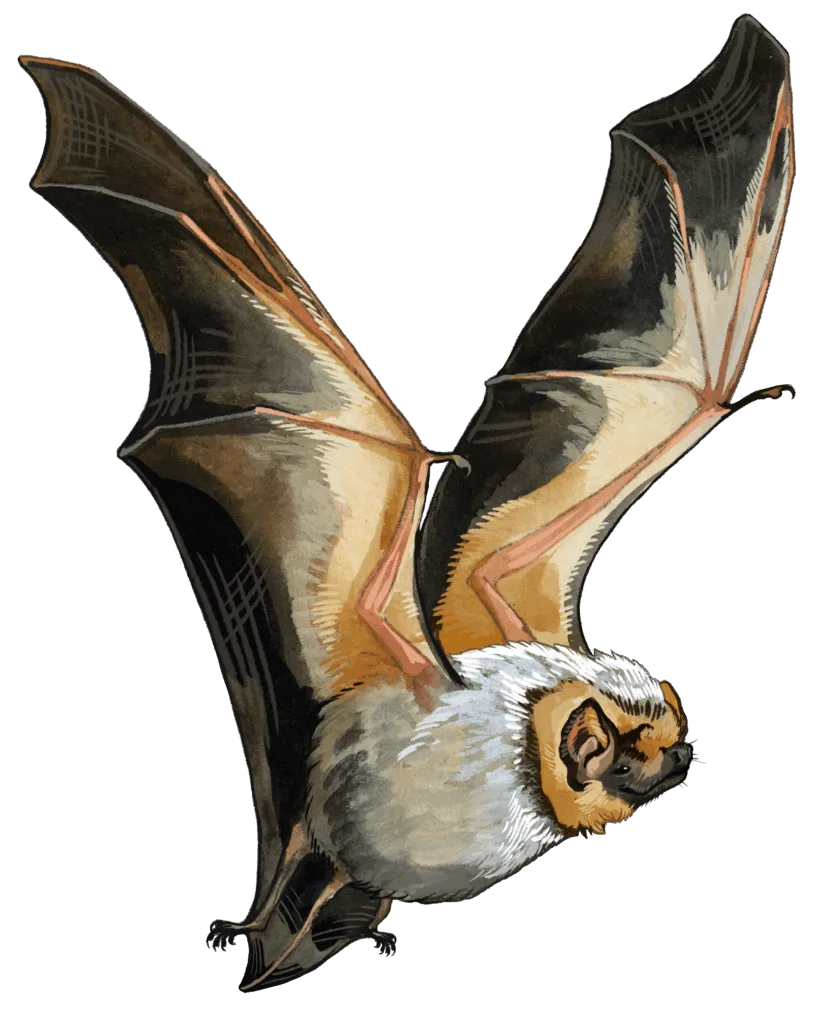
- Put up a bat box – Give them a safe place to roost
- Support bat-friendly legislation
- Keep your garden natural, avoiding pesticides and planting native species
- Keep old trees and snags if it’s safe to do so
- Educate others and bust myths about bats
- Be a responsible caver—clean your gear to prevent the spread of WNS
Even small actions can have a big impact on such a vital member of our ecosystem.

Guardians of the Night
Bats may have spooky reputations, but they’re ecological superheroes hiding in plain sight. Whether they’re eating pests, pollinating plants, or saving our farms millions, bats deserve our protection—not our fear.
Instead of spooky myths this season, let’s share the real story: bats are vital to our ecosystems and deserve our support.
Want to do more? You can support the Toronto Zoo Bat Conservation Program or explore how you can become a bat advocate in your community.
By working together, we can safeguard bat populations and ensure their survival for generations to come.
